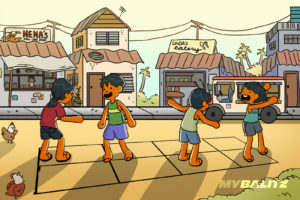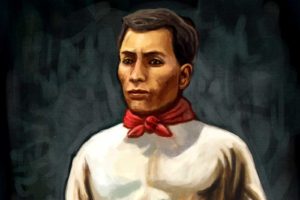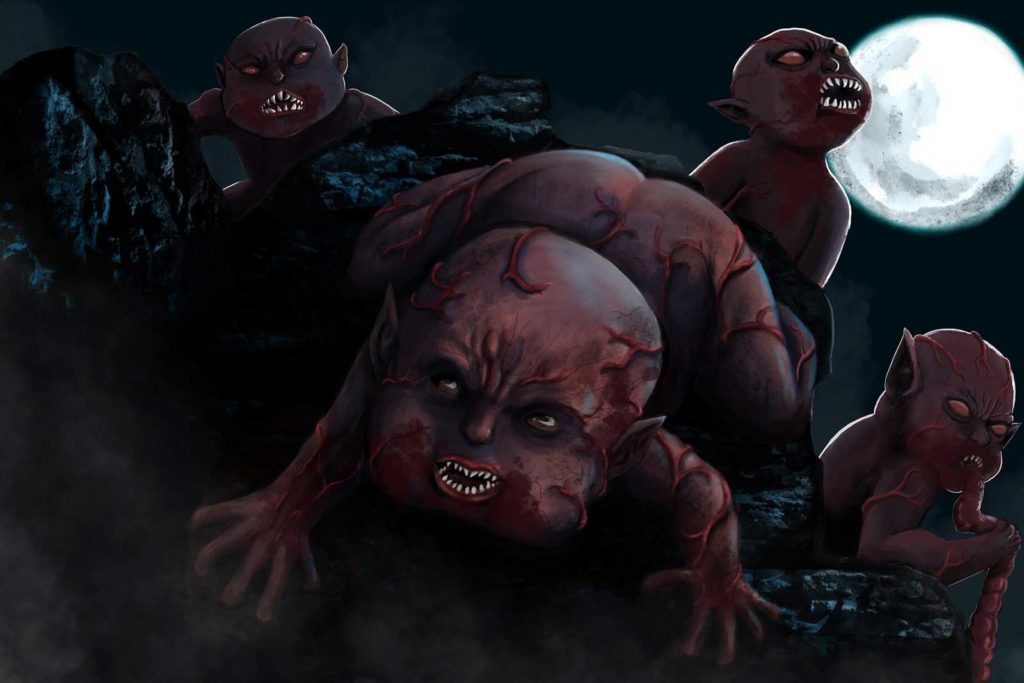
Upon hearing the word tiyanak, the same image is conjured in my head: I am lost in the forest, fumbling through brambles and branches, following the path to a baby’s urgent cries. The screams echo in darkness so absolute I’ve long abandoned all sense of direction. As the cries get nearer and nearer, my eyes adjust to moonlight shining down a clearing. I start to make out the silhouette of an infant under the shade of a tree, kicking and bawling. I reach out to the baby, spurred on by instinct more than anything else, but stop short.
The baby stops crying. It stares up at me with red eyes.
In a flash, it transforms into a creature too fast for me to register – and my life is over before I could do anything else.
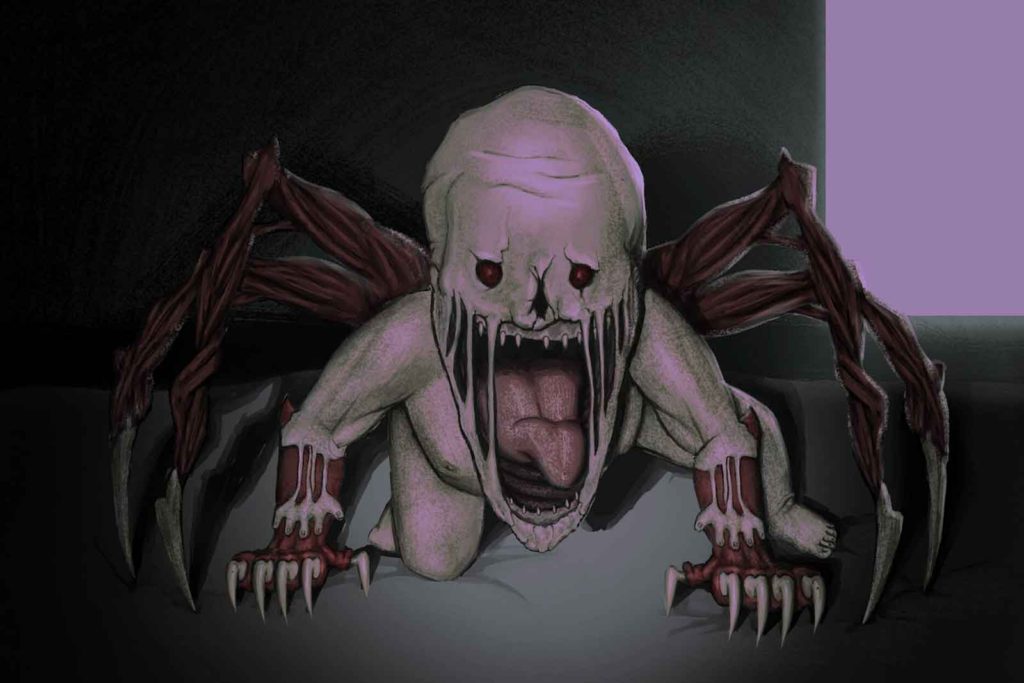
My imagination isn’t far off with what’s documented. In Damiana Eugenio’s 2007 anthology of Philippine folklore, the tiyanak lurks in the forest and lures its victim with its cries. After entrapping their prey, they reveal their true forms: vampiric creatures with fangs and claws. Like other creatures in Philippine mythology, the tiyanak loves to lead travelers astray from the path. Unlike other creatures that simply make you ill or trick you while doing so, the tiyanak guarantees your death.
Though studies do agree with my image of the tiyanak, other folklore accounts render the tiyanak fickle. For example, Evasco classifies the tiyanak as a form of duwende – one that can only reach up to a human’s knees. Other accounts from Intersection of Asian Supernatural Beings in Asian Folk Literature – A Pan-Asian Identity describe tiyanaks with various features: wide mouths, large noses, and the ability to fly. Without the latter, the tiyanaks don’t walk but gallop around. Another account describes their features like that of an old man’s; the wrinkles and white beard a sharp contrast against the tiyanaks’ body.
In Damiana Eugenio’s 2007 anthology of Philippine folklore, the tiyanak lurks in the forest and lures its victim with its cries. After entrapping their prey, they reveal their true forms: vampiric creatures with fangs and claws.
For the people who claim tiyanaks to be like duwendes, their habitats are not unlike other elves and dwarves. They come from underground homes, some like palaces filled with gold. Due to their affinity to the earth, they become guardians of the land, with farmers attempting to appease tiyanaks with offerings of food.
The peculiarities of the tiyanak don’t end here. Like other engkantos, the tiyanak dislikes being disturbed by human beings and can afflict sicknesses to the culprit. One unique thing is how they contort and twist the mouth of their victims before killing them. Aside from shapeshifting and wailing to trick humans, they also chirp like birds.
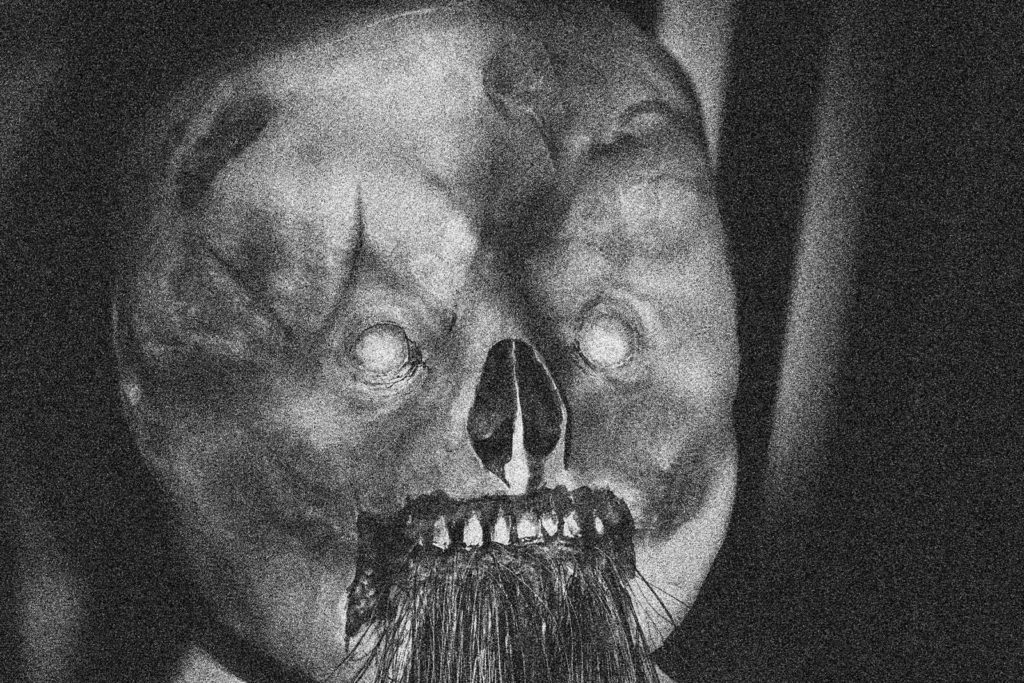
But how did such a creature come to be?
The tiyanak can be found in Philippine history centuries back. Due to the lack of proper medical care, hospitals, and healthcare knowledge, many women lost their babies upon delivery or during the term. After these miscarriages and stillbirths, the infants’ souls would become the tiyanak.
Other accounts from Intersection of Asian Supernatural Beings in Asian Folk Literature – A Pan-Asian Identity describe tiyanaks with various features: wide mouths, large noses, and the ability to fly.
Anthropologist Nestro Castro says that such tales came to life to take better care of Filipino mothers. By the time the Spanish colonization came around, however, the legend of the tiyanak became a reminder to baptize all infants. From being just the souls of dead infants, the tiyanak became the souls of those unbaptized. We can assume that the tale of the tiyanak functions to undergo baptism and proper medical care. Today, however, these tales are spun out to entertain others – or as a medium of control. Children are taught not to go to unexplored places, especially not at night. After all, you never know what you’re going to find.
They all seem like such mundane reasons for a demonic creature. What terrifies me, however, is how cunning the tiyanak can be. It shapeshifts to the one thing all humans will have the instinct to save – something so helpless and innocent. We can’t blame others for being lured into saving an infant from the wild. Our basic human nature goes punished. We reach out to the infant only to have its fangs sink into our neck.
I think I’m safe. I hardly go into unexplored places or wild jungles. But still, in the dead of the night, I brace myself hearing a baby’s cries.
References:
Philippine Folk Literature: An Anthology of Philippine Folk Literature Series, Damiana Eugenio (2007)
Stories from around the World: An Annotated Bibliography of Folk Literature, Cynthia S. Ichioka (1992)
Sa Pusod ng Lungsod: Mga Alamat, Mga Kababalaghan Bilang Mitolohiyang Urban, Eugene Y. Evasco (2000)
Intersection of Asian Supernatural Beings in Asian Folk Literature- A Pan-Asian Identity, Ronel
Laranjo, Kristina Martinez-Erbite, Zarina Joy Santos (2013)
What is a tiyanak? The Pinoy Mythological Creature’s Chilling Origins Explained, GMA News Network, retrieved







